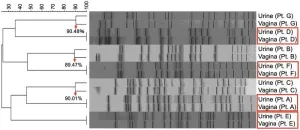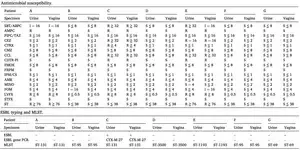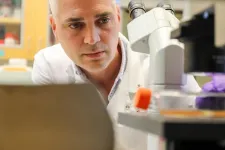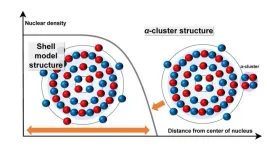(Press-News.org)
The human body hosts a diverse array of microorganisms that maintain a delicate balance crucial for overall health. This microbial harmony can be disrupted by factors like infections, aging, and hormonal changes, leading to dysbiosis—a condition where microbial communities become imbalanced and harmful to health. Postmenopausal women, for instance, are particularly susceptible to recurrent urinary tract infections and inflammation, including cystitis, due to these microbial shifts.
Dr. Takanori Sekito from the Department of Urology, Okayama University Graduate School of Medicine, Japan explains, “In postmenopausal women, the vaginal flora changes with a decrease in Lactobacillus species. Women experiencing recurrent infections of the urinary system, also known as recurrent cystitis have distinctive vaginal microbial colony compared to those with non-recurring cystitis.”
Is there a link between altered vaginal microbiota and recurrent cystitis?
Dr. Sekito teamed up with his colleagues Dr. Takuya Sadahira and Professor Motoo Araki from the Department of Urology, Okayama University Graduate School of Medicine, Japan, and Dr. Hidetada Hirakawa from the Department of Bacteriology, Gunma University Graduate School of Medicine, Japan to investigate the disease-causing bacterial colony residing in the urinary bladder and vagina of infected patients. This study, published online in Journal of Infection and Chemotherapy on June 4, 2024, highlights the association between urinary and vaginal pathogenic Escherichia coli in recurrent cystitis.
Pathogenic E. coli causes urinary tract infections. In this study, they isolated pathogenic Escherichia coli from the urine and vagina of patients with recurrent cystitis and examined the bacterial genome using multiple molecular techniques. The team also examined the sensitivity of isolated E. coli to a panel of anti-microbial agents. A dendrogram based on pulsed-field gel electrophoresis (PFGE) revealed that, in a majority of the cases, the pathogenic E. coli isolated from urine and vagina were highly similar or identical. Genomic analysis of extended-spectrum β-lactamase (ESBL) gene PCR and multilocus sequence typing (MLST) revealed that the pathogenic E. coli isolated from urine and vagina were identical. The E. coli also showed similar sensitivity to the panel of anti-microbial drugs. These findings reveal that the disease-causing pathogen was resident in both the urinary bladder and the vagina.
The authors postulate that E. coli migrates back and forth between the two niches, infecting cells in both organs and causing the disease to recur despite the prior treatment with antibiotics. Dr. Sekito explains, “The vagina can serve as a reservoir of enteric bacteria, including E. coli, and cystitis can become intractable. In recurrent cystitis, it is important to target E. coli not only in the urine but also in the vagina.”
He further, added, “At the Okayama University, we are developing Lactobacillus vaginal suppositories, as a means of prevention and treatment of recurrent cystitis. This new ‘non-antimicrobial’ prevention will reduce the unnecessary administration of antimicrobials and the consequent emergence of antimicrobial-resistant bacteria. The Lactobacillus suppositories will effectively regulate the vaginal environment and reduce the virulence of E. coli.”
In summary, this study highlights the crucial need to balance the microbial environment to favor protective bacteria for better health outcomes. Implementing new medical strategies based on these insights promises to revolutionize the management of recurrent cystitis, ensuring more effective and targeted treatments.
About Okayama University, Japan
As one of the leading universities in Japan, Okayama University aims to create and establish a new paradigm for the sustainable development of the world. Okayama University offers a wide range of academic fields, which become the basis of the integrated graduate schools. This not only allows us to conduct the most advanced and up-to-date research, but also provides an enriching educational experience.
Website: https://www.okayama-u.ac.jp/index_e.html
About Dr. Takanori Sekito from Okayama University, Japan
Dr. Takanori Sekito MD PhD serves as Medical Staff at the Department of Urology, Okayama University Graduate School of Medicine, Dentistry and Pharmaceutical Science, Okayama, Japan. Dr. Sekito has more than 34 publications and his research studies in the field of medicine cover renal transplantation, urothelial cancers, cystitis, and vaginal microbiota. Recently, Dr. Sekito received the Best Basic Research Award (2023) from Alumni Association of the Department of Urology, Okayama University.
END
COLUMBUS, Ohio – Chemists have been working to synthesize high-value materials from waste molecules for years. Now, an international collaboration of scientists is exploring ways to use electricity to streamline the process.
In their study, recently published in Nature Catalysis, researchers demonstrated that carbon dioxide, a greenhouse gas, can be converted into a type of liquid fuel called methanol in a highly efficient manner.
This process happened by taking cobalt phthalocyanine (CoPc) molecules and spreading them evenly on carbon nanotubes, graphene-like tubes that have unique electrical properties. On their surface was an electrolyte ...
South Korean researchers are revitalizing the nation's world-class cultural heritage through digital transformation. By collaborating with museums, they are bringing the rich history and culture of Korea to life using AI-based technology development.
Since 2020, the Electronics and Telecommunications Research Institute (ETRI) and the National Museum of Korea have been working together under a Ministry of Culture, Sports and Tourism R&D project to develop and demonstrate key technologies for the digital transformation of Korean cultural heritage.
The two institutions have been applying ...
When it comes to helping patients with high blood pressure get their hypertension under control, a new Tulane University study finds that pharmacists and community health workers have the best success rates.
The study, published in Circulation: Cardiovascular Quality and Outcomes, analyzed data from 100 hypertension trials around the world and compared blood pressure reductions by the type of healthcare professionals who led the interventions.
While interventions led by nurses, physicians and multiple healthcare professionals still significantly reduced blood pressure for patients, pharmacists achieved the greatest improvements, followed ...
Direct air capture was identified as one of the ‘Seven chemical separations to change the world’. This is because although carbon dioxide is the main contributor to climate change (we release ~40 billion tons into the atmosphere every year), separating carbon dioxide from air is very challenging due to its dilute concentration (~0.04%).
Prof Ian Metcalfe, Royal Academy of Engineering Chair in Emerging Technologies in the School of Engineering, Newcastle University, UK, and lead investigator states, “Dilute ...
New research led by Oregon Health & Science University reveals a promising approach to developing a universal influenza vaccine — a so-called “one and done” vaccine that confers lifetime immunity against an evolving virus.
The study, published today in the journal Nature Communications, tested an OHSU-developed vaccine platform against the virus considered most likely to trigger the next pandemic.
Researchers reported the vaccine generated a robust immune response in nonhuman primates that were exposed ...
Okinawa’s mangrove forests are home to many animal species, from crabs to kingfishers; they host a diverse ecosystem teeming with life. Among the quirkier residents living there is “Minami-Tobihaze” — the barred mudskipper. “They are fish, but they can walk and live partly on land,” says Dr. Fabienne Ziadi-Künzli from the Nonlinear and Non-equilibrium Physics Unit, who is the first author of a study on mudskipper anatomy, which was recently published in the Journal of Anatomy.
Adapting to a new life
The barred mudskipper, scientifically called Periophthalmus argentilineatus, has more than just one oddity. Their eyes ...
The world around us is made up of particles invisible to the naked eye, but physicists continue to gain insights into this mysterious realm. Findings published in Physical Review C by Osaka Metropolitan University researchers show that the nuclear structure of an atom likely changes depending on the distance the protons and neutrons are from the center of the nucleus.
OMU graduate student Maito Okada, Associate Professor Wataru Horiuchi, and Professor Naoyuki Itagaki from the Graduate School of Science compared calculations using theoretical models with existing experimental data to determine whether titanium-48, the most common isotope of titanium with 22 protons and 26 neutrons, ...
Ever hear the old adage that time flies when you’re having fun? A new study by a team of UNLV researchers suggests that there’s a lot of truth to the trope.
Many people think of their brains as being intrinsically synced to the man-made clocks on their electronic devices, counting time in very specific, minute-by-minute increments. But the study, published this month in the latest issue of the peer-reviewed Cell Press journal Current Biology, showed that our brains don’t work that way.
By analyzing changes in brain activity patterns, the research team ...
Photocatalytic hydrogen evolution from water is a key technology for achieving sustainable hydrogen production. However, the direct impact of the microscopic structure of interfacial water molecules on photocatalytic reactivity remains unexplored. In this study, the crucial roles of interfacial hydrogen bond structure and dynamics, as well as the optimal interfacial water environment for promoting H2 evolution were uncovered. These findings provide molecular-level insights that can guide the design of interfacial water conditions to enhance photocatalytic performance.
Hydrogen production via photocatalytic water splitting is a sustainable ...
Mill Valley, CA – July 10, 2024 – The SynGAP Research Fund 501(c)(3) announces a $190,636 grant, for work to be done in 2024 and 2025, to Professor Janos Zempleni, PhD of the University of Nebraska-Lincoln, to establish data required for regulatory approval for his novel treatment using an engineered version of naturally-occurring particles called exosomes. His first grant from SRF established the engineered changes required to accumulate exosomes in the brain. SRF is pleased to support the continued development of a non-invasive and targeted delivery system for therapeutics ...









